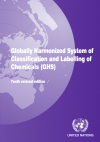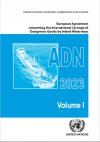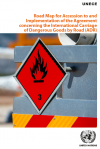Dangerous Goods
Introduction

Dangerous goods are subject to transport, workplace, storage, consumer and environment protection regulations, to prevent accidents to persons, property or the environment, to other goods or to the means of transport employed.
To ensure consistency between all these regulatory systems, the United Nations has developed mechanisms for the harmonization of hazard classification criteria and communication tools, and for transport conditions for all modes for transport. UNECE also administers regional agreements for effective implementation of these mechanisms for road, rail and inland waterways transport of dangerous goods.
In focus
Highlights
GHS Rev.10 - Chinese version available online
Upcoming Events
Palais des Nations
Room III
Geneva
Switzerland
Palais des Nations
Room III
Geneva
Switzerland
Palais des Nations, Room VIII, Geneva
Switzerland
Recent Events
Palais des Nations, Room XVIII Geneva Switzerland
Palais des Nations, Room XVIII, Geneva Switzerland
Palais des Nations, Room XXIII Geneva Switzerland








